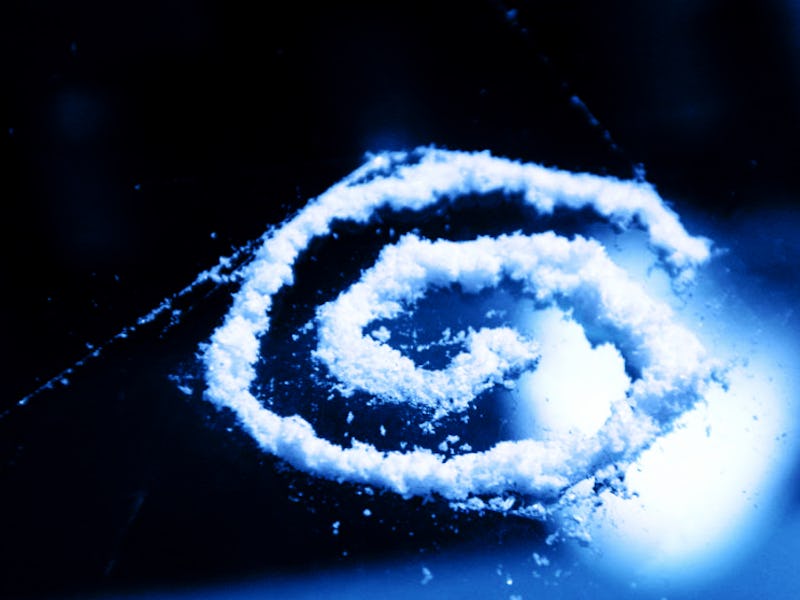Ketamine's Newly Found Link to Opioids Complicates Its Healing Potential
A club drug's path to salvation might have hit a roadblock.

Most people know of ketamine as either a recreational drug or a substance used to euthanize animals, but doctors have recently recognized its potential as a rapid and effective treatment for untreatable depression, suicidal ideation, and even migraines. Its use is already controversial given its history as an illicit “club drug,” but new research in The American Journal of Psychiatry suggesting ketamine works a lot like an opioid drug may even further complicate its future.
In a paper published Wednesday, a team of psychiatrists and anesthesiologists showed that ketamine’s rapid effects are due, at least in part, to its activation of the opioid receptors. Amid the ongoing opioid crisis in the United States, this finding could serve to complicate the redemption narrative that ketamine is currently enjoying in the public eye.
“We think ketamine is acting as an opioid,” Alan Schatzberg, M.D., a professor of psychiatry and behavioral sciences at Stanford University and one of the study’s authors, tells NPR. “That’s why you’re getting these rapid effects.”
Perhaps best known for its abuse potential, ketamine has emerged as a promising therapeutic drug. But new research on its opioid properties complicates the picture.
Schatzberg has received research funding from Janssen, the lab that conducted the Phase 2 clinical trial on a ketamine nasal spray, as well as from several other drug companies. To do this double-blind crossover study, he and his colleagues gave 12 volunteers with treatment-resistant depression one of two pills before injecting them with ketamine: either a placebo or a dose of naltrexone, a drug that blocks drugs from binding with opioid receptors. This study design allowed the researchers to measure whether ketamine’s binding to opioid receptors is necessary for its antidepressant action. Since the experiment was a crossover study, participants received both treatments at different points in time.
The subjects whose opioid receptors weren’t blocked before getting ketamine — those who got the placebo — reported much stronger reductions in depression measures than the patients who took naltrexone. However, the latter did still experience reduced depression, suggesting that ketamine’s action may not be totally opioid-related.
An average of 33 days later, the subjects returned to receive the other treatment condition — if they got a placebo the first time, this time they got naltrexone, and vice versa. After looking at the results of that treatment, the researchers concluded that their findings supported their opioid hypothesis: Ketamine-induced reductions in depressive symptoms were far stronger when the opioid receptors weren’t blocked.
This complicates what scientists know about ketamine, whose action has lately been attributed to its effects on the neurotransmitter glutamate and G proteins.
However, even though this research does strongly suggest that ketamine is an opioid, it’s important to note that not all opioids are the same, and as such ketamine’s potential makes it worth pursuing.
“Our field should not stop appropriate ketamine research and use,” Mark George, M.D., a professor of psychiatry, radiology and neuroscience at the Medical University of South Carolina who wasn’t involved in the study, wrote in an editorial accompanying the new study.
“But appropriate use means that ketamine should be given under a psychiatrist’s supervision and monitoring, and with plans to transition patients from ketamine to other medications or devices if the depression recurs.”
Some opioids bind more strongly than others, whereas some bind to different classes of opioid receptors. This study simply provides a starting point for learning more about ketamine, and it adds the crucial caveat that no treatment is without its risks. In this case, the possible drawbacks of ketamine treatments include addiction and abuse.